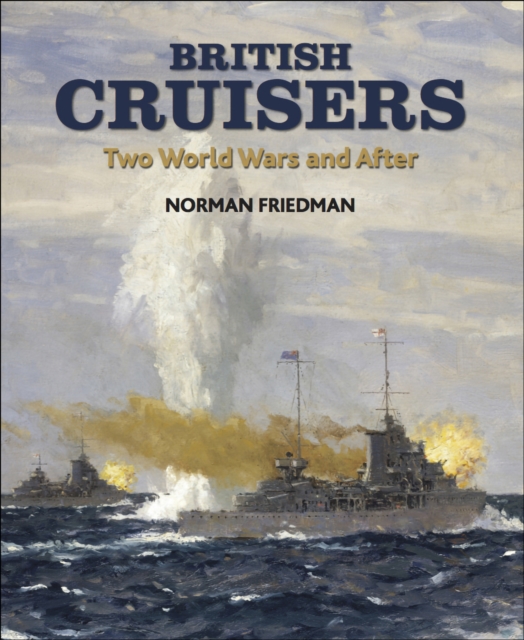
British Cruisers : Two World Wars and After EPUB
by Norman Friedman
EPUB
Please note: eBooks can only be purchased with a UK issued credit card and all our eBooks (ePub and PDF) are DRM protected.
Description
“An extraordinarily detailed account of the development of Royal Navy cruisers . . . a towering work” from the author of Fighting the Great War at Sea (Warship 2012).
For most of the twentieth century, Britain possessed both the world’s largest merchant fleet and its most extensive overseas territories. It is not surprising, therefore, that the Royal Navy always showed a particular interest in the cruiser—a multipurpose warship needed in large numbers to defend trade routes and police the empire. Above all other types, the cruiser’s competing demands of quality and quantity placed a heavy burden on designers, and for most of the interwar period, Britain sought to square this circle through international treaties restricting both size and numbers. In the process, she virtually invented the heavy cruiser and inspired the large 6in-armed cruiser, neither of which, ironically, served her best interests. This book seeks to comprehend, for the first time, the full policy background—from which a different and entirely original picture of British cruiser development emerges.
After the war, the cruiser’s role was reconsidered, and the final chapters of the book cover modernizations, the plans for missile-armed ships, and the convoluted process that turned the “through-deck cruiser” into the Invincible class light carriers. With detailed appendices of ship data, and illustrated in depth with photos and A.D. Baker’s specially commissioned plans, British Cruisers truly matches the lofty standards set by Friedman’s previous books on British destroyers.
“Wow! . . . Lavishly illustrated with a photograph or line plan on almost every page. The text is packed with technical information, detail, and description of design, construction and application of these important ships.” —Clash of Steel
For most of the twentieth century, Britain possessed both the world’s largest merchant fleet and its most extensive overseas territories. It is not surprising, therefore, that the Royal Navy always showed a particular interest in the cruiser—a multipurpose warship needed in large numbers to defend trade routes and police the empire. Above all other types, the cruiser’s competing demands of quality and quantity placed a heavy burden on designers, and for most of the interwar period, Britain sought to square this circle through international treaties restricting both size and numbers. In the process, she virtually invented the heavy cruiser and inspired the large 6in-armed cruiser, neither of which, ironically, served her best interests. This book seeks to comprehend, for the first time, the full policy background—from which a different and entirely original picture of British cruiser development emerges.
After the war, the cruiser’s role was reconsidered, and the final chapters of the book cover modernizations, the plans for missile-armed ships, and the convoluted process that turned the “through-deck cruiser” into the Invincible class light carriers. With detailed appendices of ship data, and illustrated in depth with photos and A.D. Baker’s specially commissioned plans, British Cruisers truly matches the lofty standards set by Friedman’s previous books on British destroyers.
“Wow! . . . Lavishly illustrated with a photograph or line plan on almost every page. The text is packed with technical information, detail, and description of design, construction and application of these important ships.” —Clash of Steel
Information
-
Download - Immediately Available
- Format:EPUB
- Publisher:Pen & Sword Books
- Publication Date:24/01/2011
- Category:
- ISBN:9781783469185
Other Formats
- Paperback / softback from £21.05
- PDF from £11.24
Information
-
Download - Immediately Available
- Format:EPUB
- Publisher:Pen & Sword Books
- Publication Date:24/01/2011
- Category:
- ISBN:9781783469185






